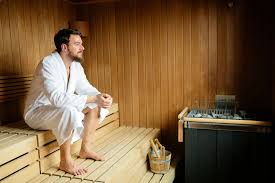According to research, not many of us are blessed with perfect feet, less than 10% of the world’s population have a foot that does not require any support or care to maintain its shape and size when loaded with the body weight. Orthotics support the foot’s natural structure when inserted inside the footwear. Your feet affect the entire body if they are tilted or not straight because they are the support base of the whole skeleton.
Do I need Orthotics?
Not too many of us have perfect feet as we mentioned above and not having an ideal foot does not mean that your feet will require special attention. Let’s start by knowing what kind of foot you have and from there we will see what kind of care the feet need.
Pronated Feet: This is the most common of all foot structural problems (Mistakenly called the flat foot.) It’s mistaken because the foot just flattens out with the body weight on it but it is not really flat such as fungus on toes. In most cases, the foot appears flat because the leg rotates to the inside, so the foot also rolls on the inside resulting in arch collapse. It is not as simple and straightforward as saying that the arch is weak and that we just have to support it. Maybe some nerves don’t function very well, making some muscles weak. Perhaps the heel itself is unbalanced and rolling to the inside. Or maybe some muscles are very tight pulling the front of the foot to the inside. However, whichever is the case, such deformity leads to a mal-alignment, not only at the foot and ankle, but also at the hip, the knee, the back and even the pelvis. For runners or any sports addict, these mean possible abnormal wear and tear of the joint surfaces and surrounding area resulting in long-term damage.
Perform this quick test if you think you have pronated feet or your feet look flat on the floor:
Check if you have an arch by lifting up your bare foot and look underneath. Continue with this present test if you do but if you do not, move down to the section entitled ‘Flat Feet’. Transfer all your body weight on that leg by putting your foot down on the ground. Is your foot now flat when placed the ground surface or is the arch still there? If the arch is as pronounced as it was up in the air, then you do not have pronated feet. If you are not sure, look and check if your foot seems to have gained length or width when you put it on the ground. This is also a sign that the foot is collapsing. You have pronated feet if you can see that your arch has flattened out meaning that your whole leg posture is inadequate or some structure in your body is not performing its job when you put your weight on it.
Flat Feet: You have flat feet if you thought you had pronated feet but later realise that you do not have an arch even when lifting your foot.
Supinated Feet: Usually it is not very easy to diagnose yourself but in general, the arch is quite definite.
Focus on what you experience as you take some steps barefoot:
- Does it feel like you walk on the outside border of your foot?
- Look at your running shoes: is the wear more in the center or are they worn out on the outside of the sole?
There is a chance that you might be a supinator if you see that the wear pattern is situated on the outside of the sole from the heel to the toes. You are also a supinator if the heel counter of most of your shoes is deformed and leans towards the outside.
High Arch: Some people have such a high arch that the middle part of the foot does not even touch the floor when they put their foot on the ground. Take a few steps somewhere to see your footprint, such as in sand, wet feet on the dry floor, and snow. You can then see if the middle part is missing or if you can detect an entire footprint.
Neutral or Normal Foot: The foot looks the same whether it is in the air or down on the ground. The wear pattern on your sole starts from the outside or middle of the heel and gradually moves to the middle of the foot, or slightly to the inside.
You do not need orthotics if you have no pain anywhere and you do not suffer from any chronic injury. In fact, you shouldn’t really be reading this article, but since it will make you more knowledgeable, you can continue reading.
If you have pains and you suffer from severe injury, then ask yourself “Where is the pain?” If you experience the pain anywhere above your belly button, it is likely that orthotics will not help you much but they will improve posture. If the pain is below the waist then they may be helpful. Is the pain during daytime or at night? Consult your doctor if you wake up at night. You may find some relief with orthotics if the pain tends to be more frequent during the day. You will find relief from the extra support with off-the-shelf insoles or orthotics no matter what kind of foot you have.
You must understand that the misalignment means that some joint surfaces don’t match perfectly and later in life may lead to an early degeneration of those joint surfaces. This is known as osteoarthritis. If you have pronated or supinated feet, custom orthotics can help with the alignment.
You are the luckiest person on this planet if you have a flat foot. The entire surface of the foot touches the ground giving you the greatest support. Therefore, you don’t need any additional support.
If there is no sign of misalignment and you have a high arch foot, then the only issue here is that you never get any support from shoes or even from over-the-counter orthotics. If the inserts or shoes provide you with the support of an arch that’s too high, then they would be too high for the average population. You may start to develop early osteoarthritis in the middle of the foot from the overhanging bones. So never having any support means that you may have some soft tissue or foot fatigue that get overstretched and becomes painful. Custom orthotics can help support an arch that’s too high.
Who should I see?
Your health specialist such as a family doctor, massage therapist, chiropractor, and physiotherapist can help you with the diagnosis. They can also help you decide whether orthotics could help. If so, they should refer you to a foot specialist who will determine the cause of your problem and help you solve it.
What about shoes?
“What are the excellent things orthotics can do if I put them in a crappy pair of shoes?” This is the most common question asked. Let’s first ensure that you know what good shoes are. Below are some of the things you should consider:
Flexible forefoot: The shoe must be able to flex in such a way that you can put the forefront of the shoe on an egg and bend the shoe without cracking the egg. Running shoes are different; they will not pass the raw egg test because they have a rocker sole, which allows them to rock instead of bending.
An anatomically correct bending point: Where your toes start is the position where your foot bends so this is where your shoe should also bend. Make sure when you flex the shoe that this is so.
Stiffness in torsion: When you hold the heel with one hand and the toe box in the other hand, it should be hard to contort the shoe in torsion, i.e., the shoe should not be able to twist.
Sturdy heel cup: The shoe heel should be made of a durable and rigid material so that it supports the heel. The regular plastic heel cup does not just move on the sole or detach from it; the heel cup should also be firmly attached to the sole.
So how are your shoes? I would suggest that you start by getting better footwear if you think that they do not qualify as good shoes. You should also consider inserts for your shoes, off-the-shelf or custom made. See your health specialist and take their recommendations if you do not feel any improvement in a week or two.
Proper footwear support is essential and will help to keep your feet healthy for a long time if you do not suffer from any pain or chronic injury.


